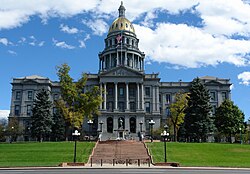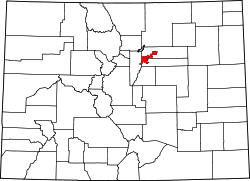
The City and County of Denver, capital of the U.S. state of Colorado, has 78 official neighborhoods used for planning and administration. [1] The system of neighborhood boundaries and names dates to 1970 when city planners divided the city into 73 groups of one to four census tracts, called "statistical neighborhoods," most of which are unchanged since then. [2]
Contents
- Central
- East
- North
- Northeast
- Northwest
- South
- Southeast
- Southwest
- West
- Non-official neighborhoods
- Registered Neighborhood Organizations
- See also
- References
- External links
Unlike some other cities, such as Chicago, Denver does not have official larger area designations. Colloquially, names such as Northside and Westside are still in use, but not well-known. [3] [4] Since 2016, Community planners have used a set of 19 planning areas, all of which are groups of statistical neighborhoods, as part of the Area Planning process. [5] [6]











